In 1799, he received a patent for the use and method of producing lighting gas by dry distillation of wood or coal, but lighting gas was not only suitable for lighting.
The honor of building a commercially successful engine internal combustion belongs to the Belgian mechanic Jean Etienne Lenoir. While working in a galvanic plant, Lenoir came to the idea that the air-fuel mixture in a gas engine could be ignited with an electric spark, and decided to build an engine based on this idea. Having solved the problems that arose along the way (tight stroke and overheating of the piston, leading to seizure), having thought over the engine cooling and lubrication system, Lenoir created a workable internal combustion engine. In 1864, more than three hundred of these engines of various capacities were produced. Having got rich, Lenoir stopped working on further improving his car, and this predetermined its fate - it was ousted from the market by a more advanced engine created by the German inventor August Otto and received a patent for the invention of his model of a gas engine in 1864.
In 1864, the German inventor Augusto Otto signed an agreement with the wealthy engineer Langen to implement his invention - the company "Otto and Company" was created. Neither Otto nor Langen possessed sufficient knowledge in the field of electrical engineering and abandoned electric ignition. They were ignited with an open flame through a tube. The cylinder of the Otto engine, unlike the Lenoir engine, was vertical. The rotating shaft was placed over the cylinder from the side. Principle of operation: the rotating shaft lifted the piston by 1/10 of the cylinder height, as a result of which a rarefied space was formed under the piston and a mixture of air and gas was sucked in. The mixture then ignited. During the explosion, the pressure under the piston increased to about 4 atm. Under the action of this pressure, the piston rose, the gas volume increased and the pressure dropped. The piston, first under gas pressure, and then by inertia, rose until a vacuum was created under it. Thus, the energy of the burned fuel was used in the engine with maximum efficiency. This was Otto's main original find. The downward working stroke of the piston began under the influence of atmospheric pressure, and after the pressure in the cylinder reached atmospheric, the exhaust valve was opened, and the piston displaced the exhaust gases with its mass. Due to the more complete expansion of combustion products, the efficiency of this engine was significantly higher than the efficiency of the Lenoir engine and reached 15%, that is, it exceeded the efficiency of the best steam engines of that time. In addition, Otto's engines were almost five times more economical than Lenoir's engines, and they immediately became in great demand. In subsequent years, about five thousand of them were produced. Despite this, Otto worked hard to improve their designs. Soon, a crank drive was used. However, the most significant of his inventions came in 1877 when Otto received a patent for a new four-stroke cycle engine. This cycle is at the heart of most gas and petrol engines to this day.
Internal combustion engine types
Piston internal combustion engine

Rotary ICE
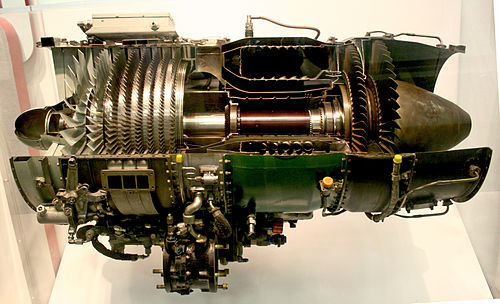
Gas turbine internal combustion engine
- Reciprocating engines - the combustion chamber is contained in the cylinder, where the thermal energy of the fuel is converted into mechanical energy, which from the translational movement of the piston is converted into rotational energy using the crank mechanism.
Internal combustion engines are classified:
a) By appointment - they are divided into transport, stationary and special.
b) By the type of fuel used - light liquid (gasoline, gas), heavy liquid (diesel fuel, marine fuel oil).
c) According to the method of formation of the combustible mixture - external (carburetor, injector) and internal (in the internal combustion engine cylinder).
d) By the way of ignition (with forced ignition, with compression ignition, calorizing).
e) According to the arrangement of the cylinders, in-line, vertical, opposed with one and two crankshafts, V-shaped with upper and lower crankshafts, VR-shaped and W-shaped, single-row and double-row star-shaped, H-shaped, double-row with parallel crankshafts, "double fan", diamond-shaped, three-beam and some others.
Gasoline
Gasoline carburetor
The working cycle of a four-stroke internal combustion engine takes two complete crank turns, consisting of four separate strokes:
- intake,
- charge compression,
- working stroke and
- release (exhaust).
Changing the working strokes is provided by a special gas distribution mechanism, most often it is represented by one or two camshafts, a system of pushers and valves that directly provide a phase change. Some internal combustion engines have used spool liners (Ricardo) with intake and / or exhaust ports for this purpose. In this case, the communication of the cylinder cavity with the manifolds was ensured by the radial and rotational movements of the spool sleeve, the windows opening the desired channel. Due to the peculiarities of gas dynamics - the inertia of gases, the time of occurrence of the gas wind, the intake, stroke and exhaust strokes in a real four-stroke cycle overlap, this is called overlapping valve timing... The higher the engine operating speed, the greater the phase overlap and the larger it is, the lower the torque of the combustion engine at low speeds. Therefore, in modern internal combustion engines, devices are increasingly used that allow changing the valve timing during operation. Engines with solenoid valve control (BMW, Mazda) are especially suitable for this purpose. Variable Compression Ratio (SAAB) engines are also available with greater performance flexibility.
Two-stroke engines have a wide variety of layouts and a wide variety of design systems. The basic principle of any two-stroke engine is that the piston performs the functions of a gas distribution element. The working cycle consists, strictly speaking, of three steps: the working stroke lasting from the top dead center ( TDC) up to 20-30 degrees to bottom dead center ( NMT), scavenging, actually combining intake and exhaust, and compression, lasting from 20-30 degrees after BDC to TDC. Purging, from the point of view of gas dynamics, is the weak link of a two-stroke cycle. On the one hand, it is impossible to ensure complete separation of the fresh charge and exhaust gases, therefore, either the loss of the fresh mixture literally flies out into the exhaust pipe is inevitable (if the internal combustion engine is a diesel, we are talking about air loss), on the other hand, the working stroke does not last half turnover, but less, which in itself reduces efficiency. At the same time, the duration of the extremely important gas exchange process, which in a four-stroke engine takes up half the operating cycle, cannot be increased. Two-stroke engines may not have a gas distribution system at all. However, if we are not talking about simplified cheap engines, a two-stroke engine is more complicated and more expensive due to the obligatory use of a blower or a pressurization system, the increased heat density of the CPG requires more expensive materials for pistons, rings, cylinder liners. The execution of the functions of the gas distribution element by the piston obliges to have its height not less than the piston stroke + the height of the purge ports, which is uncritical in a moped, but significantly makes the piston heavier even at relatively low powers. When power is measured in hundreds of horsepower, the increase in piston mass becomes a very serious factor. The introduction of vertical stroke distribution sleeves in Ricardo engines was an attempt to make it possible to reduce the size and weight of the piston. The system turned out to be complex and expensive to perform, except for aviation, such engines were not used anywhere else. Exhaust valves (with single-flow valve blowing) have twice the heat intensity in comparison with exhaust valves of four-stroke engines and worse conditions for heat removal, and their seats have a longer direct contact with exhaust gases.
The simplest from the point of view of the order of work and the most complex from the point of view of design is the Fairbanks - Morse system, presented in the USSR and in Russia, mainly by diesel locomotive diesels of the D100 series. This engine is a symmetrical twin-shaft system with diverging pistons, each of which is connected to its own crankshaft. Thus, this engine has two crankshafts, mechanically synchronized; the one associated with the exhaust pistons is 20-30 degrees ahead of the intake. Due to this advance, the quality of the blowdown improves, which in this case is direct-flow, and the filling of the cylinder is improved, since at the end of the blowdown the exhaust ports are already closed. In the 30s - 40s of the twentieth century, schemes with pairs of diverging pistons were proposed - diamond-shaped, triangular; there were aircraft diesels with three radially diverging pistons, of which two were intake and one exhaust. In the 1920s, Junkers proposed a single-shaft system with long connecting rods connected to the upper piston pins by special rocker arms; the upper piston transmitted forces to the crankshaft by a pair of long connecting rods, and there were three shaft elbows per cylinder. On the rocker arms were also square pistons of the purge cavities. Two-stroke engines with divergent pistons of any system have basically two drawbacks: firstly, they are very complex and dimensional, and secondly, the exhaust pistons and liners in the area of \u200b\u200bthe exhaust windows have significant thermal stress and a tendency to overheat. Exhaust piston rings are also thermally stressed, prone to coking and loss of elasticity. These features make the design of such motors a non-trivial task.
The direct flow valve engine is equipped with a camshaft and exhaust valves. This significantly reduces the requirements for materials and design of the CPG. The intake is through the windows in the cylinder liner, opened by the piston. This is how most modern two-stroke diesel engines are assembled. The window area and the liner at the bottom are in many cases cooled with charge air.
In cases where one of the main requirements for the engine is its cost reduction, different types of crank-chamber contour window-window blowing are used - loop, return-loop (deflector) in various modifications. To improve engine parameters, various design techniques are used - variable length of inlet and exhaust channels, the number and location of bypass channels can vary, spools, rotating gas cutters, liners and shutters are used that change the height of the windows (and, accordingly, the moments of the beginning of intake and exhaust). Most of these engines are passively air cooled. Their disadvantages are the relatively low quality of gas exchange and the loss of the combustible mixture during purging; in the presence of several cylinders, the sections of the crank chambers have to be separated and sealed, the design of the crankshaft becomes more complicated and more expensive.
Additional units required for the internal combustion engine
The disadvantage of an internal combustion engine is that it only develops its highest power in a narrow rev range. Therefore, the transmission is an integral attribute of an internal combustion engine. Only in some cases (for example, in airplanes) it is possible to do without a complex transmission. The idea of \u200b\u200ba hybrid car is gradually conquering the world, in which the engine always works at its optimum.
In addition, an internal combustion engine needs a power system (for supplying fuel and air - preparing a fuel-air mixture), an exhaust system (for removing exhaust gases), it also cannot do without a lubrication system (designed to reduce friction forces in engine mechanisms, protect parts engine from corrosion, as well as together with the cooling system to maintain optimal thermal conditions), cooling systems (to maintain optimal thermal conditions of the engine), starting system (starting methods are used: electric starter, using an auxiliary starting engine, pneumatic, using human muscular strength ), an ignition system (for igniting the fuel-air mixture, used in engines with forced ignition).
see also
- Philippe Le Bon is a French engineer who received a patent in 1801 for an internal combustion engine with compression of a mixture of gas and air.
- Rotary engine: designs and classification
- Rotary piston engine (Wankel engine)
Notes
Links
- Ben Knight "Increasing Mileage" // Article on Technologies That Reduce Fuel Consumption of Automotive Internal Engines
Internal combustion engine - an engine in which fuel burns directly in the working chamber ( inside ) engine. The ICE converts the pressure from the combustion of the fuel into mechanical work.
- does not have additional heat transfer elements - fuel, burning, itself forms a working fluid.
- more compact, since it does not have a number of additional units
- easier
- more economical
- consumes gaseous or liquid fuel, which has very rigidly specified parameters (volatility, flash point of vapor, density, heat of combustion, octane or cetane number), since the performance of the internal combustion engine itself depends on these properties.
Encyclopedic YouTube
1 / 4
The principle of operation of the internal combustion engine
General device of an internal combustion engine
Lesson 179. Internal combustion engine - 1
10 Weirdest Mini Cars With Internal Combustion Engines
Subtitles
History of creation
In 1807, a French-Swiss inventor Francois Isaac de Rivas * (François Isaac de Rivaz) built the first piston engine, often called de Rivas engine... The engine ran on gaseous hydrogen, having structural elements that have since been included in subsequent ICE prototypes: a connecting rod-piston group and spark ignition. The first practically usable two-stroke gas combustion engine was designed by French mechanic Etienne Lenoir (1822-1900) in 1860. Power was 8.8 kW (11.97 hp). The engine was a single-cylinder, horizontal, double-acting machine running on a mixture of air and lighting gas with electric spark ignition from an external source. The engine efficiency did not exceed 4.65%. Despite the shortcomings, the Lenoir engine gained some popularity. Used as a boat engine.
Having become acquainted with the Lenoir engine, the outstanding German designer Nikolaus August Otto (1832-1891) created a two-stroke atmospheric internal combustion engine in 1863. The engine had a vertical cylinder arrangement, open flame ignition and efficiency up to 15%. Displaced the Lenoir engine.
In 1876, Nikolaus August Otto built a more advanced four-stroke gas internal combustion engine.
In 1885, German engineers Gottlieb Daimler and Wilhelm Maybach developed a lightweight gasoline carburetor engine. Daimler and Maybach used it to create the first motorcycle in 1885, and in 1886 on the first car.
The first practically usable internal combustion engine tractor was the 1902 American Ivel three-wheeled tractor by Dan Alborn. About 500 of these light and powerful machines were built.
Almost simultaneously, in Germany, by order of the USSR and by the project of Professor Yu. V. Lomonosov, on the personal instructions of VI Lenin in 1924, a diesel locomotive Eel2 (originally Yue001) was built at the German plant Esslingen (formerly Kessler) near Stuttgart.
Internal combustion engine types
If the fuel is flammable, the flash occurs before the piston reaches TDC. This, in turn, will cause the piston to crank the crankshaft in the opposite direction - a phenomenon called backfire.
The octane number is a measure of the percentage of isooctane in a heptane-octane mixture and reflects the ability of a fuel to resist self-ignition by temperature. Fuels with higher octane numbers allow a high compression ratio engine to operate without the tendency to spontaneously ignite and detonate and therefore have a higher compression ratio and higher efficiency.
Contrary to popular belief, modern engines, traditionally called diesel, do not work according to the Diesel cycle, but according to the Trinkler-Sabate cycle with a mixed heat supply.
The disadvantages of diesel engines are due to the peculiarities of the operating cycle - higher mechanical stress, which requires increased structural strength and, as a result, an increase in its dimensions, weight and increased cost due to a complicated design and the use of more expensive materials. Also diesel engines due to heterogeneous combustion, they are characterized by inevitable soot emissions and an increased content of nitrogen oxides in the exhaust gases.
Gas engines
An engine that burns hydrocarbons as fuel in a gaseous state under normal conditions:
- mixtures of liquefied gases - stored in a cylinder under a saturated vapor pressure (up to 16 atm). The liquid phase or the vapor phase of the mixture evaporated in the evaporator loses pressure in the gas reducer to close to atmospheric, and is sucked by the engine into the intake manifold through an air-gas mixer or injected into the intake manifold by means of electric nozzles. Ignition is carried out with the help of a spark slipping between the electrodes of the spark plug.
- compressed natural gases - stored in a cylinder under a pressure of 150-200 atm. The design of the power supply systems is similar to the supply systems with liquefied gas, the difference is the absence of an evaporator.
- generator gas - gas obtained by converting solid fuel into gaseous fuel. The following are used as solid fuels:
Gas-diesel
The main portion of fuel is prepared, as in one of the types of gas engines, but it is ignited not by an electric plug, but by a pilot portion of diesel fuel, injected into the cylinder similarly to a diesel engine.
Rotary piston
Proposed by the inventor Wankel at the beginning of the 20th century. The basis of the engine is a triangular rotor (piston) rotating in a special 8-shaped chamber that acts as a piston, crankshaft and gas distributor. This design allows any 4-stroke cycle of Diesel, Stirling or Otto to be carried out without using a special valve timing mechanism. In one revolution, the engine performs three complete working cycles, which is equivalent to a six-cylinder piston engine. Serially built by NSU in Germany (RO-80), VAZ in the USSR (VAZ-21018 Zhiguli, VAZ-416, VAZ-426, VAZ-526), \u200b\u200bMazda in Japan (Mazda RX-7, Mazda RX-8 ). Despite its fundamental simplicity, it has a number of significant structural difficulties that make its widespread implementation very difficult. The main difficulties are associated with the creation of durable efficient seals between the rotor and the chamber and with the construction of a lubrication system.
In Germany at the end of the 70s of the twentieth century, there was an anecdote: "I will sell NSU, I will give in addition two wheels, a headlight and 18 spare engines in good condition."
- RCV is an internal combustion engine, the gas distribution system of which is realized due to the movement of the piston, which reciprocates, alternately passing the inlet and outlet pipes.
Combined internal combustion engine
- - an internal combustion engine, which is a combination of piston and blade machines (turbine, compressor), in which both machines participate in a relative measure in the implementation of the working process. An example of a combined internal combustion engine is a piston engine with gas turbine charging (turbocharging). A great contribution to the theory of combined engines was made by the Soviet engineer, Professor A. N. Shelest.
Turbocharging
The most common type of combined engine is the turbocharged piston engine. A turbocharger or turbocharger (TK, TH) is a supercharger that is driven by exhaust gases. It got its name from the word "turbine" (fr. Turbine from Latin turbo - vortex, rotation). This device consists of two parts: a turbine rotor wheel, driven by exhaust gases, and a centrifugal compressor, fixed at opposite ends of a common shaft. The jet of the working fluid (in this case, the exhaust gases) acts on the blades, fixed around the circumference of the rotor, and sets them in motion together with the shaft, which is manufactured in one piece with the turbine rotor made of an alloy close to alloy steel. On the shaft, in addition to the turbine rotor, there is a compressor rotor made of aluminum alloys, which, when the shaft rotates, allows "pumping" air under pressure into the internal combustion engine cylinders. Thus, as a result of the action of exhaust gases on the turbine blades, the turbine rotor, shaft and compressor rotor are simultaneously spun. The use of a turbocharger in conjunction with an intercooler (intercooler) allows for the supply of denser air to the internal combustion engine cylinders (in modern turbocharged engines, this is the scheme used). Often, when a turbocharger is used in an engine, one speaks of a turbine without mentioning a compressor. The turbocharger is one piece. You cannot use the energy of the exhaust gases to supply the air mixture under pressure to the cylinders of the internal combustion engine using only a turbine. The injection is provided by that part of the turbocharger, which is called the compressor.
At idle, at low revs, the turbocharger produces little power and is driven by a small amount of exhaust gas. In this case, the turbocharger is ineffective and the engine operates in much the same way as without supercharging. When a much higher power output is required from the engine, its rpm, as well as the throttle clearance, increase. As long as there is enough exhaust gas to rotate the turbine, much more air is drawn through the intake manifold.
Turbocharging allows the engine to run more efficiently because the turbocharger uses energy from the exhaust gas that would otherwise (most) be wasted.
However, there is a technological limitation known as "turbo lag" ("turbo delay") (with the exception of engines with two turbochargers - a small and a large one, when a small TK operates at low speeds, and a large one at high speeds, jointly providing the required amount of air mixture into the cylinders or when using a variable geometry turbine, motorsport also uses a forced acceleration of the turbine using an energy recovery system). Engine power does not increase instantly due to the fact that it will take a certain time to change the speed of the engine, which has some inertia, and also due to the fact that the greater the mass of the turbine, the more time it will take to spin up and create pressure. sufficient to increase engine power. In addition, the increased exhaust pressure leads to the fact that the exhaust gases transfer part of their heat to the mechanical parts of the engine (this problem is partially solved by the manufacturers of Japanese and Korean internal combustion engines by installing an additional cooling system for the turbocharger with antifreeze).
Cycles of operation of piston internal combustion engines
Reciprocating engines internal combustion are classified by the number of strokes in the working cycle into two-stroke and four-stroke.
The working cycle of four-stroke internal combustion engines takes two full crank revolutions or 720 degrees of crankshaft rotation (PCV), consisting of four separate strokes:
- intake,
- charge compression,
- working stroke and
- release (exhaust).
Changing the working strokes is provided by a special gas distribution mechanism, most often it is represented by one or two camshafts, a system of pushers and valves that directly provide a phase change. Some internal combustion engines have used spool liners (Ricardo) with intake and / or exhaust ports for this purpose. In this case, the communication of the cylinder cavity with the manifolds was ensured by the radial and rotational movements of the spool sleeve, the windows opening the desired channel. Due to the peculiarities of gas dynamics - the inertia of gases, the time of occurrence of the gas wind, the intake, stroke and exhaust strokes in a real four-stroke cycle overlap, this is called overlapping valve timing... The higher the engine operating speed, the greater the phase overlap and the larger it is, the lower the torque of the combustion engine at low speeds. Therefore, in modern internal combustion engines, devices are increasingly used that allow changing the valve timing during operation. Engines with solenoid valve control (BMW, Mazda) are especially suitable for this purpose. Engines with variable compression ratio (SAAB AB) are also available, offering greater performance flexibility.
Two-stroke engines have a wide variety of layouts and a wide variety of design systems. The basic principle of any two-stroke engine is that the piston performs the functions of a gas distribution element. The working cycle consists, strictly speaking, of three steps: the working stroke lasting from the top dead center ( TDC) up to 20-30 degrees to bottom dead center ( NMT), scavenging, actually combining intake and exhaust, and compression, lasting from 20-30 degrees after BDC to TDC. Purging, from the point of view of gas dynamics, is the weak link of a two-stroke cycle. On the one hand, it is impossible to ensure complete separation of the fresh charge and exhaust gases, therefore, either the loss of the fresh mixture literally flies out into the exhaust pipe is inevitable (if the internal combustion engine is a diesel, we are talking about air loss), on the other hand, the working stroke does not last half turnover, but less, which in itself reduces efficiency. At the same time, the duration of the extremely important gas exchange process, which in a four-stroke engine takes up half the operating cycle, cannot be increased. Two-stroke engines may not have a gas distribution system at all. However, if we are not talking about simplified cheap engines, a two-stroke engine is more complicated and more expensive due to the obligatory use of a blower or a pressurization system, the increased heat density of the CPG requires more expensive materials for pistons, rings, and cylinder liners. The performance by the piston of the functions of the gas distribution element obliges to have its height not less than the piston stroke + the height of the blowing holes, which is uncritical in a moped, but significantly makes the piston heavier even at relatively low powers. When power is measured in hundreds of horsepower, the increase in piston mass becomes a very serious factor. The introduction of vertical stroke distribution sleeves in Ricardo engines was an attempt to make it possible to reduce the size and weight of the piston. The system turned out to be complex and expensive to perform, except for aviation, such engines were not used anywhere else. Exhaust valves (with single-flow valve blowing) have twice the heat intensity in comparison with exhaust valves of four-stroke engines and worse conditions for heat dissipation, and their seats have a longer direct contact with exhaust gases.
The simplest from the point of view of the order of work and the most complex from the point of view of design is the Koreyvo system, presented in the USSR and in Russia, mainly by diesel locomotive diesel engines of the D100 series and tank diesel engines KhZTM. This engine is a symmetrical twin-shaft system with diverging pistons, each of which is connected to its own crankshaft. Thus, this engine has two crankshafts, mechanically synchronized; the one connected to the exhaust pistons is 20-30 degrees ahead of the intake. Due to this advance, the quality of the blowdown, which in this case is direct-flow, improves, and the filling of the cylinder improves, since at the end of the blowdown the exhaust ports are already closed. In the 30s - 40s of the twentieth century, schemes with pairs of diverging pistons were proposed - diamond-shaped, triangular; there were aircraft diesels with three radially diverging pistons, of which two were intake and one exhaust. In the 1920s, Junkers proposed a single-shaft system with long connecting rods connected to the upper piston pins by special rocker arms; the upper piston transmitted forces to the crankshaft by a pair of long connecting rods, and there were three shaft elbows per cylinder. On the rocker arms were also square pistons of the purge cavities. Two-stroke engines with divergent pistons of any system have basically two drawbacks: firstly, they are very complex and dimensional, and secondly, the exhaust pistons and liners in the area of \u200b\u200bthe exhaust windows have significant temperature stress and a tendency to overheat. Exhaust piston rings are also thermally stressed, prone to coking and loss of elasticity. These features make the design of such motors a non-trivial task.
The direct flow valve engine is equipped with a camshaft and exhaust valves. This significantly reduces the requirements for materials and design of the CPG. The intake is through the windows in the cylinder liner, opened by the piston. This is how most modern two-stroke diesel engines are assembled. The window area and the liner at the bottom are in many cases cooled with charge air.
In cases where one of the main requirements for the engine is its cost reduction, different types of crank-chamber contour window-window blowing are used - loop, return-loop (deflector) in various modifications. To improve engine parameters, various design techniques are used - variable length of inlet and exhaust channels, the number and location of bypass channels can vary, spools, rotating gas cutters, liners and shutters are used that change the height of the windows (and, accordingly, the moments of the beginning of intake and exhaust). Most of these engines are passively air cooled. Their disadvantages are the relatively low quality of gas exchange and the loss of the combustible mixture during purging; in the presence of several cylinders, the sections of the crank chambers have to be separated and sealed, the design of the crankshaft becomes more complicated and more expensive.
Additional units required for the internal combustion engine
The disadvantage of an internal combustion engine is that it only develops its highest power in a narrow rev range. Therefore, the transmission is an integral attribute of an internal combustion engine. Only in some cases (for example, in airplanes) it is possible to do without a complex transmission. The idea of \u200b\u200ba hybrid car is gradually conquering the world, in which the engine always works at its optimum.
In addition, an internal combustion engine needs a power system (for supplying fuel and air - preparing a fuel-air mixture), an exhaust system (for removing exhaust gases), it also cannot do without a lubrication system (designed to reduce friction forces in engine mechanisms, protect parts engine from corrosion, as well as together with the cooling system to maintain optimal thermal conditions), cooling systems (to maintain optimal thermal conditions of the engine), starting system (starting methods are used: electric starter, using an auxiliary starting engine, pneumatic, using human muscular strength ), an ignition system (for igniting the fuel-air mixture, used in engines with forced ignition).
Manufacturing technological features
High demands are placed on the machining of holes in various parts, including engine parts (cylinder head (cylinder head) holes, cylinder liners, crank and piston head holes, gear holes), etc. High-precision grinding and honing technologies are used.
see also
| at Wikimedia Commons | |
| Internal combustion engine on Wikinews |
- Internal combustion engine cooling system
- Philippe Le Bon is a French engineer who received a patent in 1801 for an internal combustion engine with compression of a mixture of gas and air.
- Rotary piston engine (Wankel engine)
ICE is an engine that burns various fuels directly inside the unit itself. Unlike engines of another type, ICEs are deprived of: any elements that transfer heat for further conversion into mechanical energy, the conversion takes place directly from the combustion of fuel; much more compact; have a low weight relative to other types of units with comparable power; require the use of a certain fuel with strict characteristics of combustion temperature, evaporation rate, octane number, etc.
Four-stroke engines are used in the automotive industry:
1. Inlet;
2. Compression;
3. Working stroke;
4.
Release.
But there are also two-stroke versions of internal combustion engines, but in the modern world, they are of limited use.
In this article, only motors installed on cars will be considered.
Types of engines for the fuel used
Gasoline engines, as the name implies, are used as fuel for work - gasoline with a different octane number, and have a system for forced ignition of the fuel mixture using an electric spark.They can be divided according to the type of intake into carburetor and injection. Carburetor motors are already disappearing from production due to the difficulty in fine tuning, high gasoline consumption, inefficiency in mixing the fuel mixture and inadequacy to modern stringent environmental requirements. In such engines, mixing of the combustible mixture begins in the carburetor chambers and ends along the way in the intake manifold.
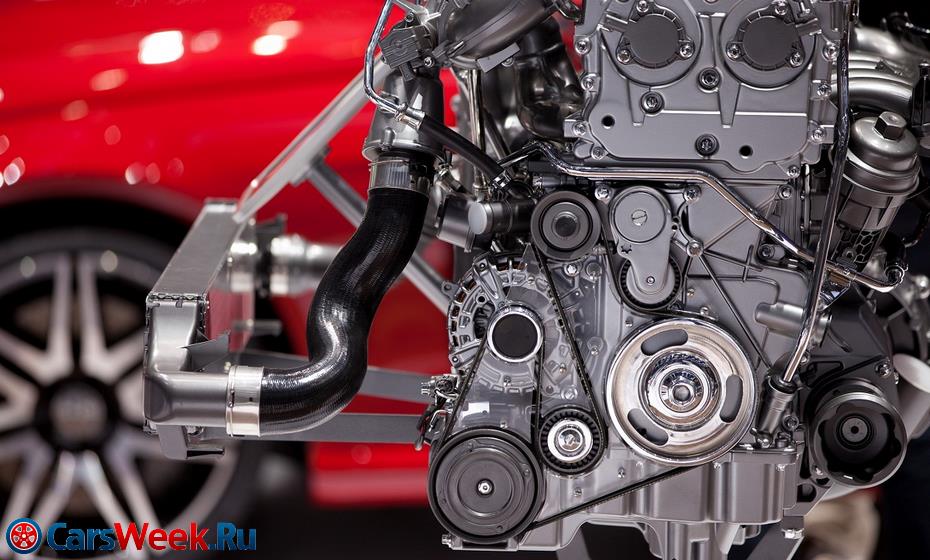
Injection units are developing at a rapid pace and the fuel injection system has been improving with each generation. The first injectors had a "mono injection" with a single nozzle. In fact, it was the modernization of the carburetor engines. Over time, on most units, systems began to be used with separate nozzles for each cylinder. The use of injectors in the intake system made it possible to more accurately control the proportions of fuel and air in different operating modes of the unit, reduce fuel consumption, increase the quality of the fuel mixture, and increase the power and environmental friendliness of power units.
Modern injectors installed on power units with a direct fuel injection system into the cylinders are capable of producing several separate fuel injections per stroke. This further improves the quality of the fuel mixture and maximizes the energy return from the amount of gasoline used. That is, the economy and performance of the motors have increased even more.
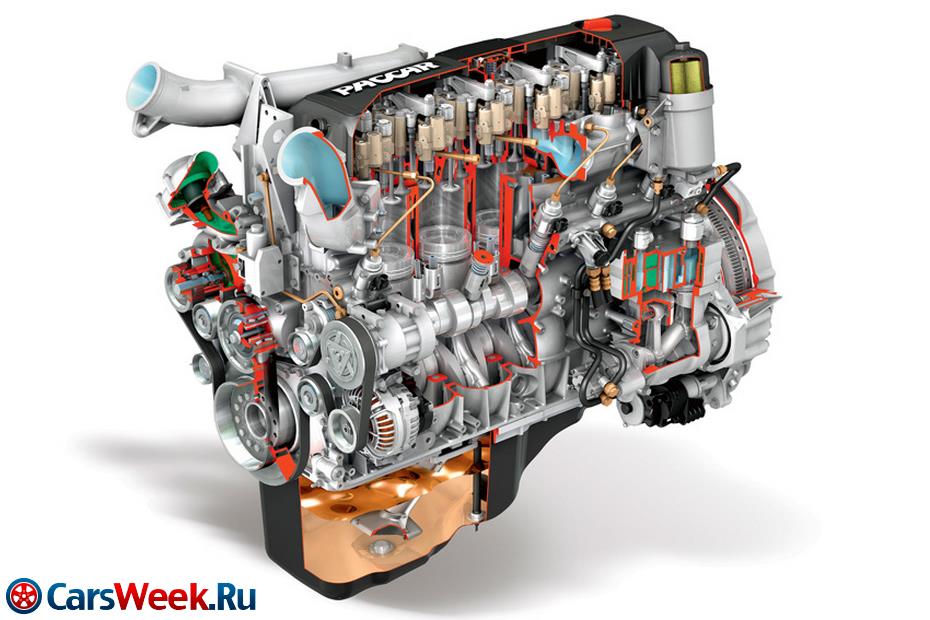
Diesel units - use the principle of ignition of a mixture of diesel fuel and air when heated by strong compression. At the same time, forced ignition systems are not used in diesel units. These engines have a number of advantages over gasoline engines, first of all, they are fuel economy (up to 20%), with a comparative power. Less fuel is consumed due to the higher compression ratio in the cylinders, which improves the combustion characteristics and energy release of the fuel mixture, and therefore, less fuel is needed to achieve the same results. In addition, diesel units do not use throttle valves, which improves air flow to the power unit, which further reduces fuel consumption. Diesel engines develop more torque and at lower engine speeds.
Not without flaws. Due to the increased load on the cylinder walls, the designers had to use more reliable materials and increase the size of the structure (increase in weight and production costs). In addition, the operation of the diesel power unit is loud due to the peculiarities of fuel ignition. And the increased mass of parts does not allow the engine to develop high revs at the same speed as gasoline ones, and the maximum value of the crankshaft revolutions is lower than that of gasoline units.
A kind of internal combustion engine by design
Hybrid powertrain
This type of car has started to gain popularity in recent years. Thanks to its efficiency in fuel economy and the increase in the overall power of the vehicle by combining two types of units In fact, this design consists of two separate units - a small internal combustion engine (most often diesel) and an electric motor (or several electric motors) with a large-capacity battery.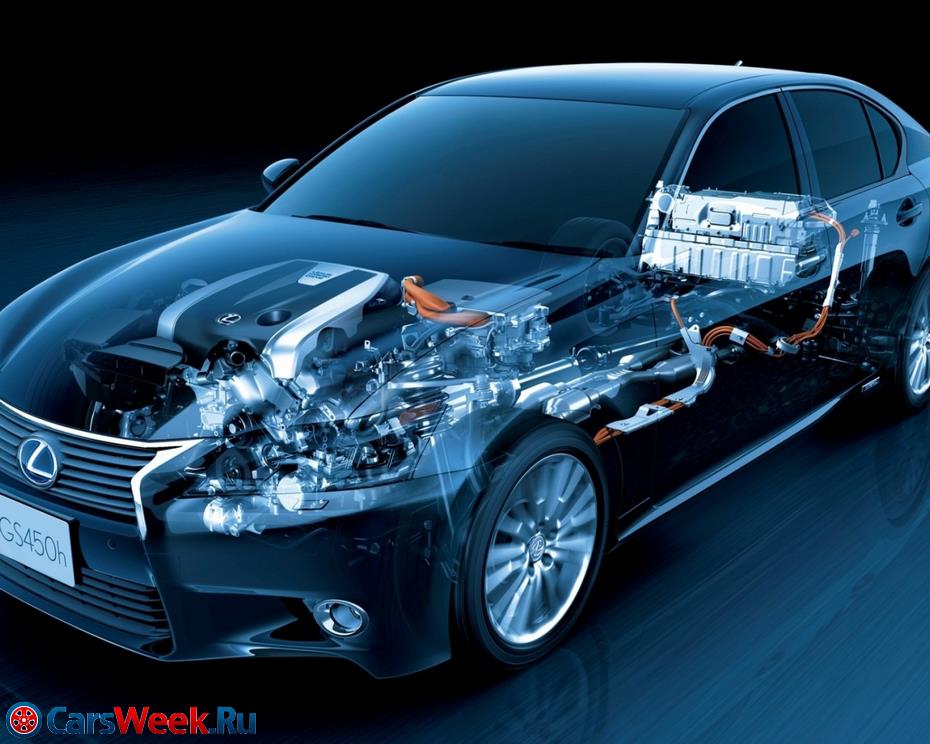
The advantages of the combination are expressed in the ability to combine the energy of two units during acceleration, or to use each type of engine separately, depending on the need. For example, when driving in a city traffic jam, only the electric motor can work, saving diesel fuel. When driving on country roads, the internal combustion engine works as a more hardy, powerful and with a large power reserve unit.
At the same time, a special battery for electric motors can be recharged from a generator, or using a regenerative braking system, which saves not only fuel, but also the electricity needed to charge the battery.
Rotary piston motor
The rotary-piston motor is built according to a unique scheme of movement of the piston-rotor, which moves inside the cylinder not along a reciprocating path, but around its axis. This is due to the special triangular piston design and the special arrangement of the intake and exhaust ports in the cylinder.
Thanks to this design, the engine quickly picks up speed, which increases the dynamic characteristics of the car. But with the development of the classic ICE design, the Wankel engine began to lose its relevance due to design constraints. The principle of piston movement does not allow achieving a high compression ratio of the fuel mixture, which excludes the use of diesel fuel. A small resource, the complexity of maintenance and repair, as well as weak environmental indicators do not allow car manufacturers to develop this direction.
Varieties of power units by layout
Due to the need to reduce weight and dimensions, as well as the placement of a larger number of pistons in one unit, it led to the appearance of engine types in terms of layout.Inline motors

The in-line engine is the most classic version of the power unit. In which all pistons and cylinders are located in one row. At the same time, modern engines with an in-line layout contain no more than six cylinders. But it is the six-cylinder in-line engines that have the best performance in balancing vibration during operation. The only drawback is the significant length of the motor, relative to other layouts.
V-shaped motors
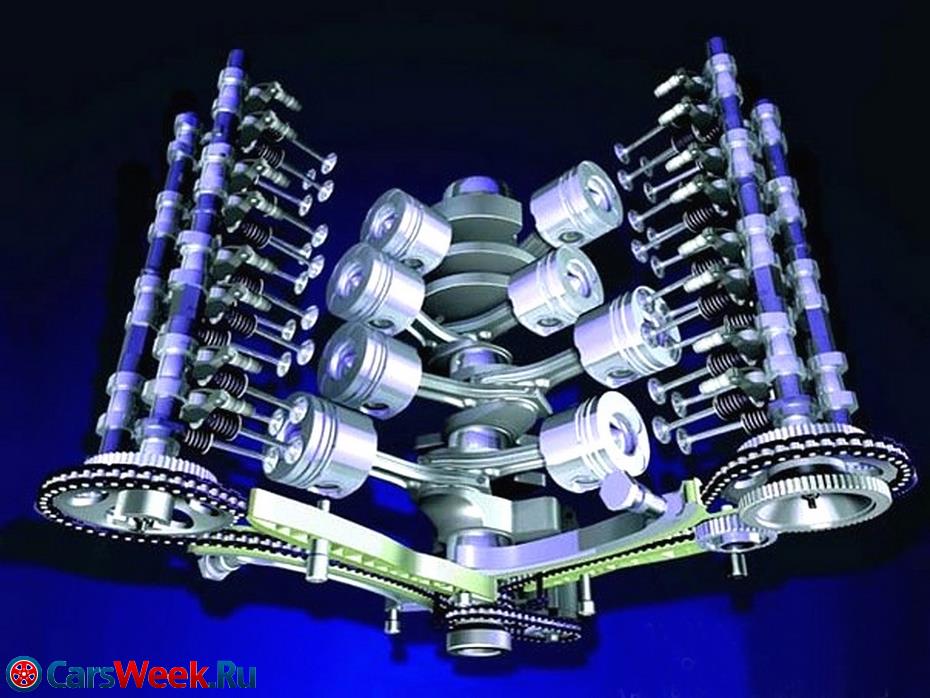
These motors appeared as a result of the desire of designers to reduce the size of the engines, and the need to place more than six pistons in one block. In these motors, the cylinders are in different planes. Visually, the arrangement of the cylinders forms the letter "V", hence the name. The angle between the two rows is called the camber angle, and varies over a wide range, dividing this type of engine into subgroups.
Boxer motors

Boxer engines received a maximum camber angle of 180 degrees. This allowed the designers to reduce the height of the unit to a minimum size, and distribute the load on the crankshaft, increasing its resource.
VR motors
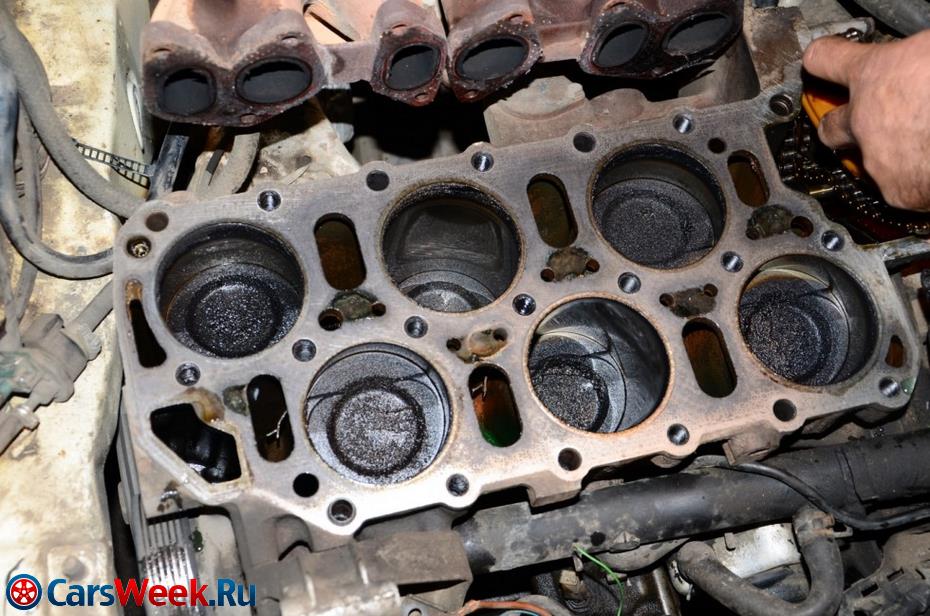
It is a combination of the properties of in-line and V-shaped units. The camber angle in such engines reaches 15 degrees, which allows the use of one cylinder head with a single valve timing mechanism.
W-shaped motors
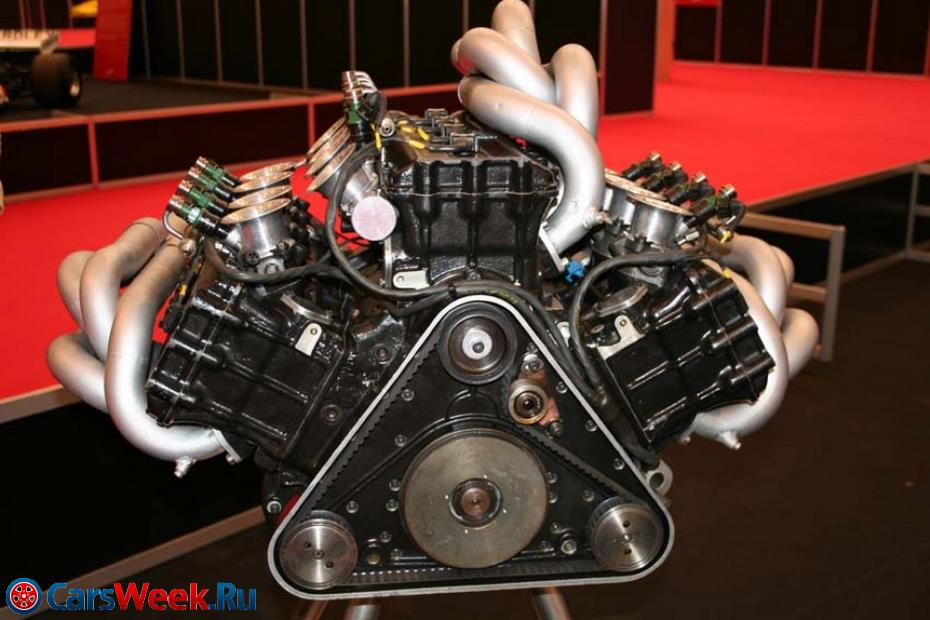
One of the most powerful and "extreme" ICE designs. They can have three rows of cylinders with a large camber angle, or two combined VR blocks. Today, motors for eight and twelve cylinders have become widespread, but the design allows the use of more cylinders.
Internal combustion engine characteristics
After reviewing a lot of information about various cars, any interested person will see certain basic parameters of the motor:The power of the power unit, measured in hp. (or kWh);
Maximum torque developed by the power unit, measured in N / m;
Most car enthusiasts share power units only by power. But this division is not entirely correct. Certainly, a unit of 200 "horses" is preferable to an engine of 100 "horses" on a heavy crossover. And for a light urban hatchback, a 100 horsepower engine is enough. But there are some nuances.
The maximum power indicated in the technical documentation is achieved at certain crankshaft speeds. But when using a car in urban conditions, the driver rarely spins the engine above 2,500 rpm. Therefore, the longer the operating time of the machine, only part of the potential power is involved.
But, often, there are cases on the road. When it is necessary to sharply increase the speed to overtake, or to avoid an emergency. It is the maximum torque that affects the ability of the unit to quickly gain the required speed and power. Simply put, torque affects vehicle dynamics.
It is worth noting a slight difference between gasoline and diesel engines. Gasoline engine - delivers maximum torque at crankshaft rpm from 3,500 to 6,000 rpm, and diesel engines can reach maximum parameters at lower rpm. Therefore, it seems to many. That diesel units are more powerful and "pull" better. But, most of the most powerful units use gasoline fuel, since they are capable of developing a greater number of revolutions per minute.
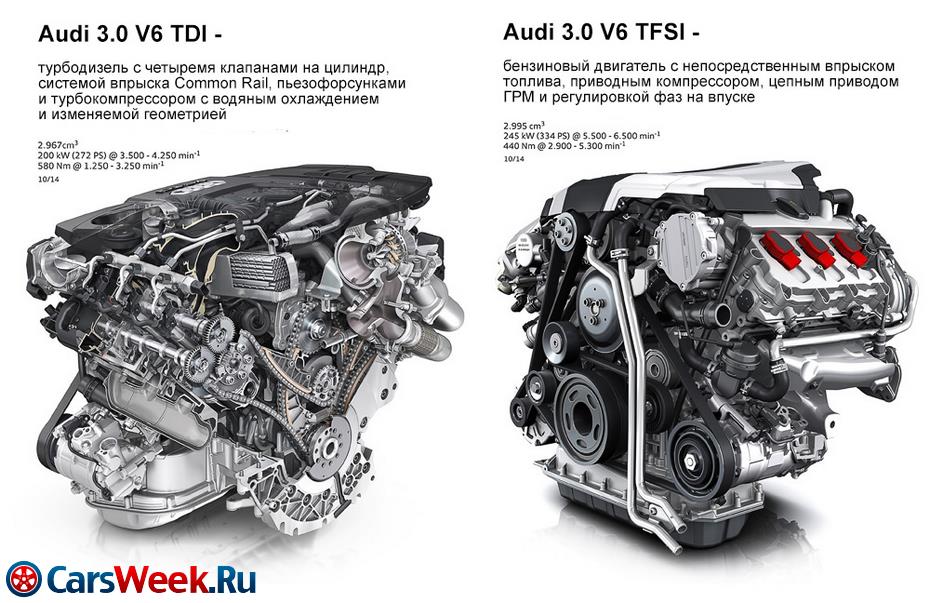
And for a detailed understanding of the term torque, you should look at the units of its measurement: Newtons multiplied by meters. In other words, torque determines the force with which the piston pushes against the crankshaft, which in turn transfers power to the gearbox, and ultimately to the wheels.
Also, you can mention the powerful technology, in which the maximum torque can be reached at a speed of 1,500 per minute. Basically, these are tractors, powerful dump trucks, and some diesel all-terrain vehicles. Naturally, such machines do not need to spin the engine up to maximum rpm.
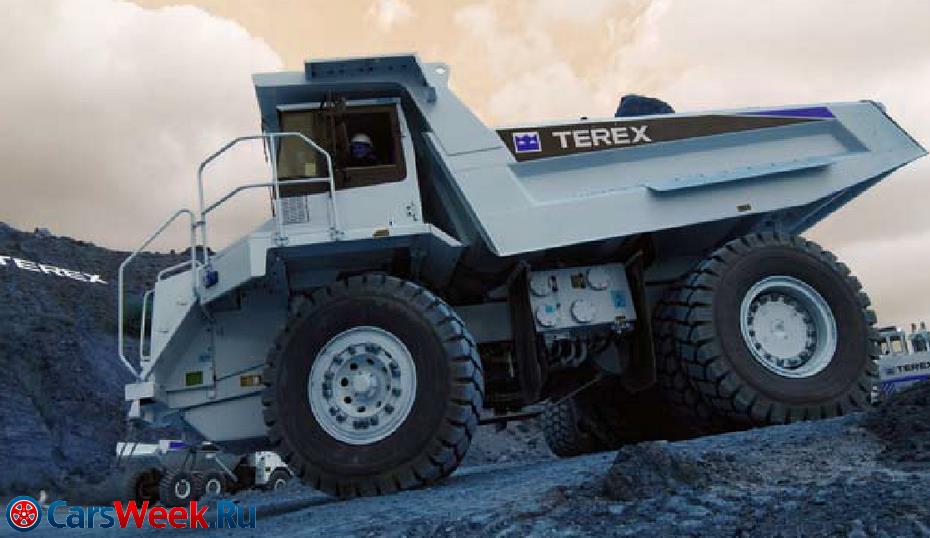
Based on the information provided, we can conclude that the torque depends on the volume of the power unit, its dimensions, the dimensions of the parts and their weight. The heavier these elements are, the more torque prevails at low revs. Diesel units have higher torque and lower crankshaft revolutions (high inertia of a heavy crankshaft and other elements do not allow high revolutions to be developed).
Car engine power
It is worth recognizing that power and torque are interrelated parameters that depend on each other. Power is a certain amount of work done by a motor in a time. In turn, the work of the motor is the torque. Therefore, power is characterized as the amount of torque per unit of time.There is a well-known formula that characterizes the ratio of power and torque:
Power \u003d torque * rpm / 9549
As a result, we get the power value in kilowatts. But naturally, looking at the characteristics of cars, we are more accustomed to seeing the figures in "hp". To convert kilowatts to hp you need to multiply the resulting value by 1.36.

